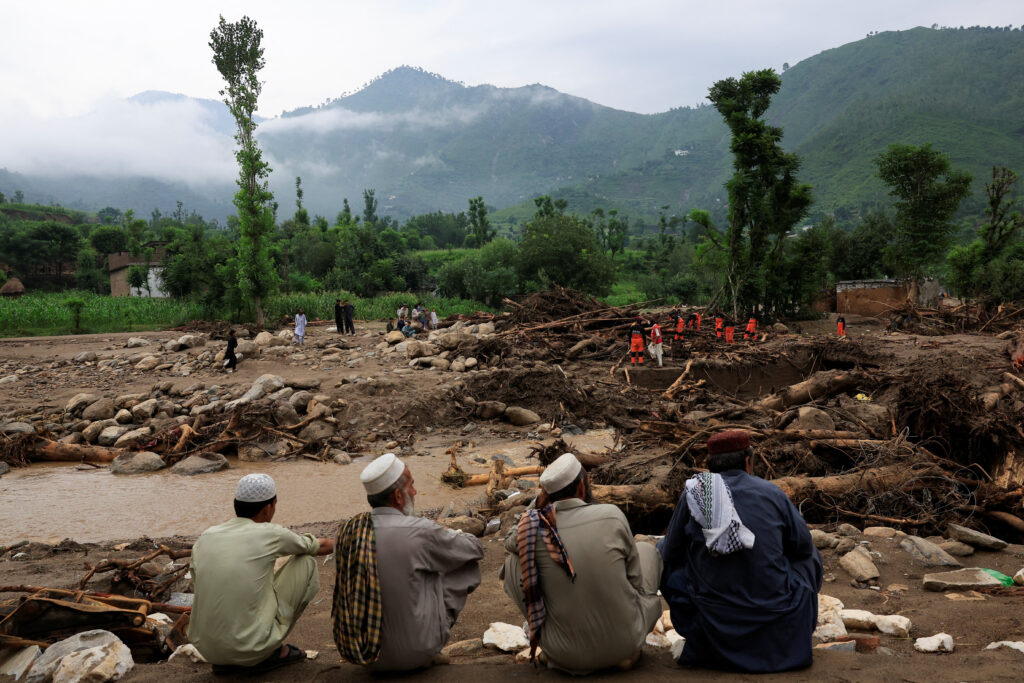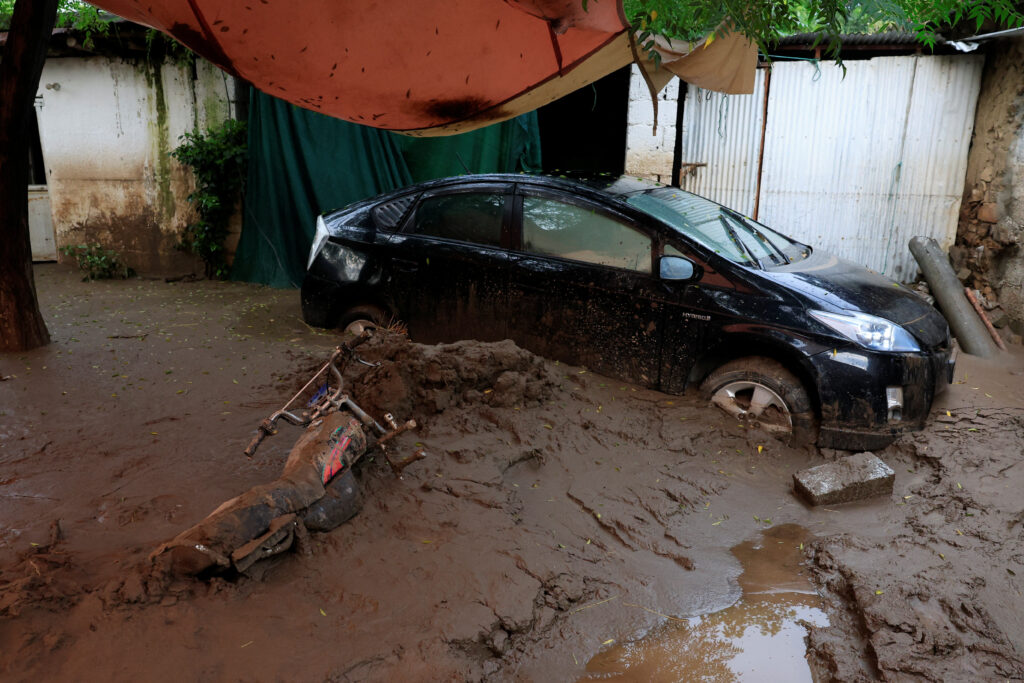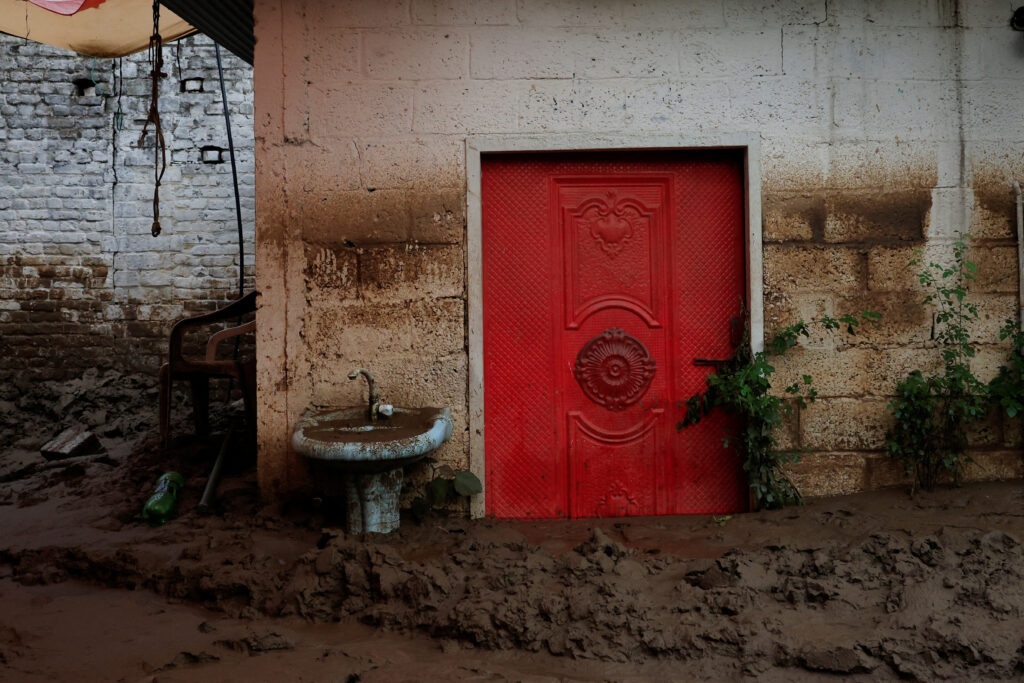- Web Desk
- 2 Hours ago

Govt ramps up relief as flood toll climbs to 670
-
- Web Desk
- Aug 18, 2025

ISLAMABAD: Federal ministers flanked by Chairman of the National Disaster Management Authority (NDMA) warned on Monday of the grave impacts of climate change as the country reels from unprecedented flooding that has left hundreds dead and dozens missing.
The Chairman of the National Disaster Management Authority (NDMA), Lieutenant General Inam Haider Malik warned that melting glaciers posed serious risks to Gilgit-Baltistan (G-B) and Azad Kashmir, with potential spillover impacts on Islamabad and Rawalpindi. “So far, 670 people have lost their lives nationwide due to torrential rains, while 80 to 90 remain missing,” he said, noting that search operations for those swept away by floodwaters were underway. He expressed hope that the situation would normalise by the end of September.

Federal Minister for Information Ata Tarar said that relief operations were ongoing in flood-hit areas and assured that the government was working to ensure timely delivery of aid. Chairing a high-level meeting, Prime Minister Shehbaz Sharif reviewed the flood situation in Khyber Pakhtunkhwa (KP) and G-B. “The federal government is fulfilling its responsibility at the national level,” Tarar said, adding that the NDMA remained in close coordination with provincial disaster authorities.
Tarar further stressed the importance of early warning systems and data sharing to mitigate losses, while Climate Change and Environmental Coordination Minister Musadik Malik expressed deep sympathy with flood victims. “We will make every effort to compensate for the damages,” Malik said, urging all provinces to work together without discrimination to restore damaged infrastructure.

Officials also flagged cloudbursts as an emerging threat linked to climate change, compounding the country’s vulnerability. The ministers reiterated that rehabilitation of affected communities remains a top priority, with the government pledging coordinated efforts alongside provincial administrations.
Climate change costs Pakistan USD45bn, claims over 2,000 lives in three years
Pakistan, highly vulnerable to climate-induced disasters, continues to face mounting challenges in balancing humanitarian relief with long-term adaptation measures.
NDMA issues warning
Pakistan faces a worsening flood crisis as heavy monsoon rains pushed rivers in Punjab and Khyber Pakhtunkhwa (KP) to dangerous levels, prompting the NDMA to issue an emergency alert. The Provincial Disaster Management Authority (PDMA) confirmed 382 deaths in KP alone, with Buner the hardest hit, reporting 274 fatalities. Shangla and Mansehra also saw dozens of lives lost, while Peshawar reported widespread destruction to homes and livestock.
Since June 26, severe rains, flash floods, and landslides have left at least 657 people dead and nearly 1,000 injured nationwide. Crops and villages have been submerged, with KP suffering the brunt due to cloudbursts and flash flooding. Prime Minister Shehbaz Sharif has dispatched ministers to supervise relief operations in the most affected districts, including Buner, Swat, and Shangla.
KP civil officers pledge salaries for flood relief
The NDMA’s National Emergency Operations Centre warned of two to three more monsoon spells until mid-September, with rainfall projected to be up to 60% above average. Authorities cautioned of further flash floods, landslides, and thunderstorms in hilly and coastal areas, urging the public to avoid unnecessary travel. Punjab’s PDMA also issued alerts, with rising water levels already reported at Jinnah and Chashma barrages in Mianwali, keeping the flood situation dire across the country.
Fears of 2022 floods reignited
The current wave of torrential rains has reignited fears of a disaster on the scale of the catastrophic floods of 2022, when record monsoon rains and glacial melt killed over 1,700 people and caused more than $30 billion in damages. Crops, homes, and critical infrastructure were devastated, leaving millions displaced and food insecurity at alarming levels.
By 2050 climate change will shrink Pakistan’s economy by 9pc
While the 2022 floods followed a different pattern, experts warn that this year’s intense cloudbursts and monsoon spells could lead to a similar crisis. “Although the 2022 floods had a different pattern, the ongoing rains suggest that a similar flood situation cannot be ruled out,” Muhammad Idrees Mehsud, member of the NDMA’s Disaster Risk Reduction unit, earlier said during a press briefing in Islamabad. He stressed that the impacts of climate change are intensifying in Pakistan with each passing year, raising the likelihood of recurring disasters.
NDMA Chairman further cautioned that Pakistan is currently receiving 50 to 60 percent more rainfall compared to last year. “The spell that began today will persist until August 23, with two to three more monsoon spells expected until September 10,” he said, urging authorities and citizens alike to brace for potentially severe flooding.






